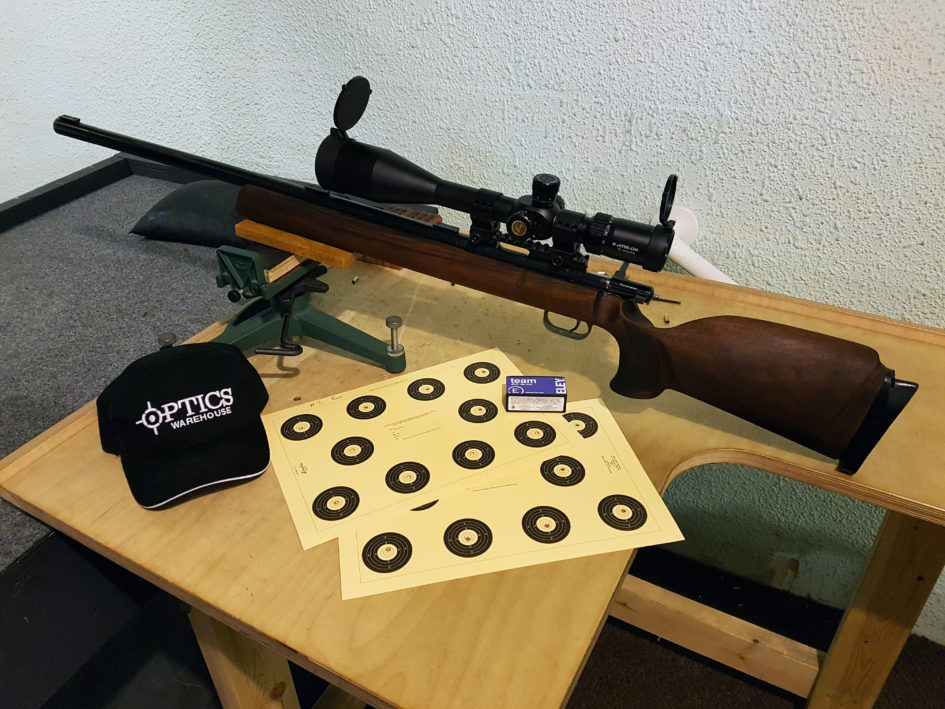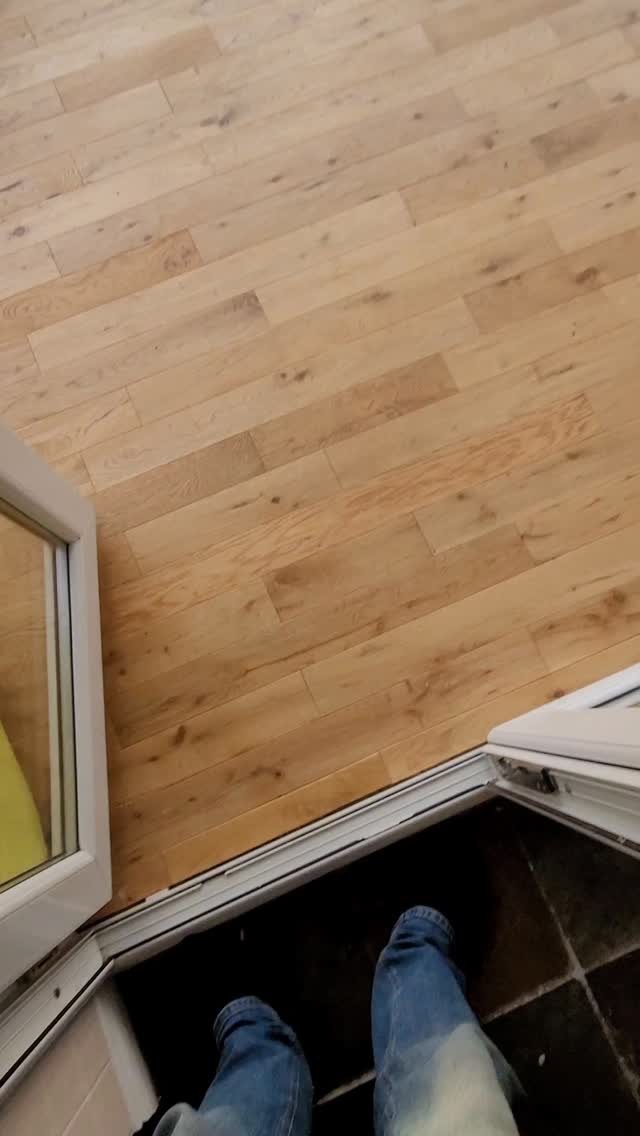How Much Does A Click Move My Bullet?
For me, one of the big issues I had when starting shooting was the uncertainty to everything surrounding the rifle. Shooting from a sling with iron sights there was so much to contend with trying to nail the Fundamentals of Marksmanship without experienced shooters complaining about different batches of ammunition causing variations.
At this point there is still one major question, how much am I moving my aim with each click of the sights? I may have a group the size of the 9 ring, but I’d like to centre the group over the spot on an old 10 spot to increase my chances of getting the bullseye!
I remember being given the sage advice from one of the experienced members of the club at the time “4 Clicks gets you from one side of the bull to the other…”, which on the surface seems like great wisdom, but was he talking about the centre of the bullet on the line to the other, or the edge of the bullet from one side to the other, and what if I had german (Milliradian) sights, or English (Imperial) sights?
Click Reference on 25 Yard NSRA BR “10 Spot”
MOA – Minute Of Angle Sights
Though there are an almost endless variations of sights, optical, dioptre, iron, that all come with varying levels of adjustment, or no click value at all, some sights come with friction adjustment where you can be as fine as you can actually turn the adjustment turret, the most popular “click” values for MOA sights come in 2 flavours.
1/4 MOA – Quarter Minute of Angle Per Click
1/8 MOA – Eighth Minute of Angle Per Click
With 1/4 MOA click sights being much more common than the finer 1/8 MOA click Sights.
So just how much do these clicks adjust bullet impact at 25 yards?

If the Black Hole is dead centre on this NSRA 2510BR15-18, the red circle shows how far one quarter MOA click will move the bullet impact (with perfect ammunition and a perfect shot). This is enough to move us out of the “x” but not enough to move us out of the 10 ring.

With the finer 1/8 MOA you can see that from dead centre we can make a click adjustment and still be within the X-Ring. If you’re aiming for X’s and you’re clipping the line of the X with each click of a 1/4 MOA sights, it might be time to look for finer sight adjustment.
Mil – Milliradian Sights
Along with MOA Sights, on the market are also Mil adjusted scopes, and often these come with Mil-Dot Reticles. These often also come in 2 common varieties;
1/10 Milliradian Per Click
1/20 Milliradian Per Click
How much does the click adjustment move the bullet impact from these sights at 25 yards?

1/10 Milliradian clicks will see you completely cutting the line and half way into the 10 ring, another click and you’d be out of the 10 ring completely, however, taking it the other way, if you’re clipping the line of the 10 ring, 2 clicks in would see you in the X-Ring.

One click from dead centre would see you clipping the X-ring and would cost you the ‘x’, likewise, if you’re clipping the x-ring, you know you can click over without coming out the other side of the x-ring.
Summary
MOA vs Mil
This is entirely down to personal preference, perhaps you’ve got more than one application for your rifle and scope combination and there can be reasons one may be better for your circumstances, however from a logical standpoint and for a rifle that is purely to shoot Bench rest, For me, 1/8 MOA is the clear winner, since it has the finest level of adjustment, those shots that are close to the ‘x’ ring can be comfortably moved without moving outside of the ‘x’ ring further centring your group within the smallest of aiming marks.
If you could get sights that were much finer than 1/8 MOA, I think you’re at the point of diminishing returns, say you can fire accurately to 1/10 MOA, rim fire ammunition in the majority of rifles does not currently shoot that finely and you’d be chasing the ammunition, rather than being able to more-accurately centre your group. I believe this is the reason why finer adjustments are not commonplace on the optics market.
MOA Group Example
If you have a rifle/ammunition combination that shoots 1/4 MOA, your groups could look like this, shooting high and right:

With 1/4 MOA Sights, 1 click down and left will push you out of the x-ring the other direction.

With the same group and 1/8 MOA Sights, the group will be much more central and more X’s will be possible, here we see 1 click down and left, from the same starting group as above and the group is much more centred.

Further Reading (the Mathmatics bit)
MOA Cheat Sheet – Using “Shooters MOA” (1 inch at 100 yards)
| Inch | mm | cm | Inch | |||||
| Clicks at 25 yards | 1/4 | 1/8 | 1/4 | 1/8 | Actual MOA at 100y | 2.66 | 1.047 | |
| 1 | 1/16 | 1/32 | 1.59 | 0.79 | Shooters MOA at 100y | 2.54 | 1.000 | |
| 2 | 1/8 | 1/16 | 3.18 | 1.59 | 1 MOA at 25y | 0.64 | 0.250 | |
| 3 | 3/16 | 3/32 | 4.76 | 2.38 | True MOA at 25y | 0.66 | 0.262 | |
| 4 | 1/4 | 1/8 | 6.35 | 3.18 | ||||
| 5 | 5/16 | 5/32 | 7.94 | 3.97 | ||||
| 6 | 3/8 | 3/16 | 9.53 | 4.76 | ||||
| 7 | 7/16 | 7/32 | 11.11 | 5.56 | ||||
| 8 | 1/2 | 1/4 | 12.70 | 6.35 | ||||
MIL Cheat Sheet
| Inch | mm | cm | Inch | |||||
| Clicks at 25 yards | 1/10 | 1/20 | 1/10 | 1/20 | MIL at 100y | 9.14 | 3.600 | |
| 1 | 0.09 | 0.05 | 2.29 | 1.14 | MIL at 100m | 10.00 | 3.937 | |
| 2 | 0.18 | 0.09 | 4.57 | 2.29 | 1 MIL at 25 yards | 2.29 | 0.900 | |
| 3 | 0.27 | 0.14 | 6.86 | 3.43 | 1 MIL at 25 metres | 2.50 | 0.984 | |
| 4 | 0.36 | 0.18 | 9.14 | 4.57 | ||||
| 5 | 0.45 | 0.23 | 11.43 | 5.72 | ||||
| 6 | 0.54 | 0.27 | 13.72 | 6.86 | ||||
| 7 | 0.63 | 0.32 | 16.00 | 8.00 | ||||
| 8 | 0.72 | 0.36 | 18.29 | 9.14 | ||||
General Measurements
| Target Size (*According to NSRA Rules) | mm | Inch | MOA ((Ring size – bullet)/MOA) |
| X-Ring | 7.62 | 0.30 | 0.30 |
| 10 Ring* | 12.92 | 0.51 | 1.10 |
| 9 Ring* | 20.23 | 0.80 | 2.20 |
| 8 Ring* | 27.55 | 1.08 | 3.30 |
| 7 Ring* | 34.86 | 1.37 | 4.40 |
| 1 True MOA | 6.65 | 0.26 | – |
| Bullet Size | mm | Inch | |
| 5.6 | 0.22 |













13th October 2021 at 1:01 am
Very useful. Exactly what I was looking for. Thanks